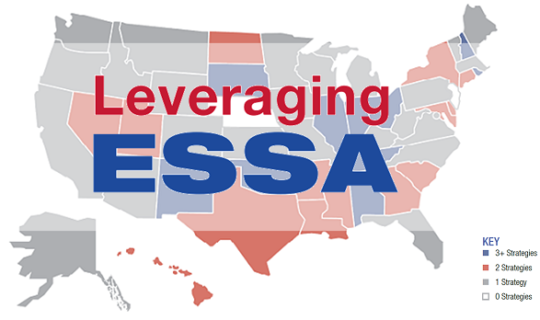Resource: Aligning for Student Success
How Community Colleges Are Working With K-12 to Improve College and Career Outcomes
Community colleges play a critical role in our education ecosystem by providing open-access education to a substantial majority of the country’s high school graduates that are first-generation, low-income and/or racial and ethnic minorities. Promising models from across the country show that when community college and K-12 leaders link up to align academic, navigational and career supports, students are set on a path to succeed in postsecondary and beyond.
To provide support to community college and K-12 leaders work in this area, Education Strategy Group, in partnership with AACC, and ACCT developed a series of recommendations for how community colleges can partner with K-12 leaders to address issues like remediation, enrollment and graduation gaps which have persisted for decades.
The community colleges highlighted in this report are models for how collaboration can promote college readiness and success for all students. The report profiles successful programs at a variety of community colleges that serve as exemplary models, including:
- The City University of New York and State University of New York’s focus on using the 12th-grade year to increase academic readiness
- Miami Dade College’s early advising to support students to and through college
- Maryland’s Montgomery College and Prince George’s Community College’s mapping of transfer and career opportunities to accelerate baccalaureate degree completion through collaboration
The report specifically recommends that community colleges focus on three priorities:
- Accelerate Academic Transitions: Community colleges can partner with K-12 school systems to provide opportunities for students to “speed-up” their learning through early postsecondary course-taking opportunities in high school or “catch-up” to a college-ready level through 12th grade transitions courses that bring developmental education down to high school
- Extend Navigational Supports: Community colleges can work with K-12 partners to strengthen academic counseling and provide clear academic and career pathways for students.
- Serve as Career Bridges: Community colleges can and should serve as career bridges that guide students from high school to a credential with currency in the labor market.
In the long run, the alignment between community college and K-12 partners is critical to
improve student success in high school and increase postsecondary attainment levels for students that have been traditionally underserved in higher education. Together, community college and K-12 leaders have a potent opportunity to develop and scale the promising practices outlined in the report to drive outcomes that lead to a more secure and fulfilling future for all students.







